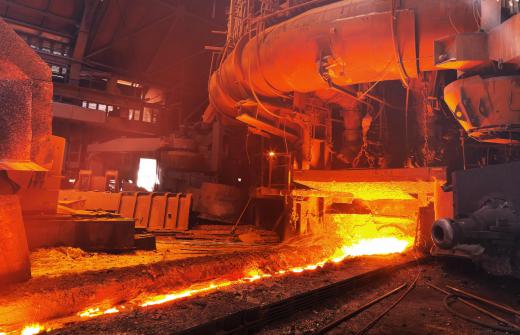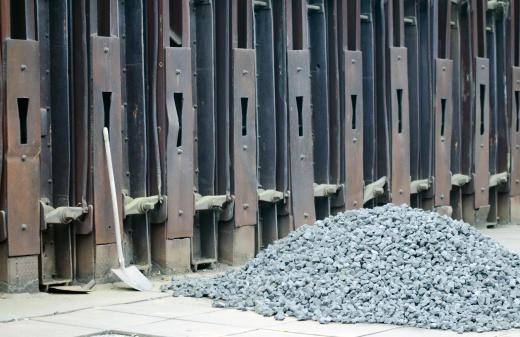The term crucible steel can be somewhat misleading as it does not refer to a particular steel product but rather to a specific steel production process. The crucible steel process involves the smelting of stock such as wrought iron, cast iron, and blister steel in small, foundry crucibles for carburizing or decarburizing. During these processes, carbon is either diffused into or removed from the stock to produce optimal metallurgical qualities in the finished product. After smelting, the crucible is removed from the furnace and the steel is poured into ingot molds. The crucible steel process is one of the oldest documented methods of producing steel and, although it has been replaced with more efficient methods, is still used to produce small quantities of high quality materials for specialized applications.
Steel is a combination of iron and small quantities of carbon. Combinations such as these are known as alloys with additives, carbon in this case, enhancing the quality of the base material and lending specific characteristics to the end product. Steel, for instance, is harder than wrought iron, less brittle than cast iron, and has better wear and corrosion resistance qualities than either. Steel may be produced in a variety of ways, most of which involve melting iron stock in the presence of a carbon source. This process causes small amounts of carbon to diffuse into the melted iron with typical end concentrations of carbon ranging from 0.2% to 2.1% depending on the intended use of the alloy.

One of the oldest forms of steel production is the crucible steel process; the first reliable documentation of crucible made steels are medieval Islamic records circa approximately 1050. The basic principle of crucible produced steel centers around the smelting of metal stock in vessels or containers made of various refractory materials small enough to be handled by one or two persons. The containers or crucibles are charged with various metals including wrought iron, cast iron, or blister steel and fired in special furnaces to melt the charge. Low carbon materials such as wrought iron are supplemented with a carbon source such as charcoal which carburizes or infuses the melt with carbon. In contrast, stock material with carbon contents too high for general steel manufacture are decarburized; this is typically done by exposing the melted material to an oxygen source.

The process generally begins with the crucibles being heated to white heat in a coke or gas fired furnace at which point they are removed from the heat source, charged with the raw materials, and returned to the furnace. They are then left for several hours until the raw materials have completely melted. The crucibles are then removed from the furnace, any impurities on the surface of the melted steel are skimmed off, and the steel is poured into ingot molds. This process is time consuming and expensive and has largely been replaced by more economical, high capacity processes such as Bessemer furnaces. The high quality of crucible steel has, however, meant that the process is still used to produce small quantities of steel for specialized niche markets.
